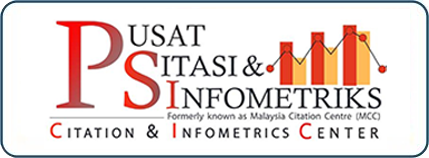Diversification Benefits of Malaysian REITs in the COVID-19 Periods
DOI:
https://doi.org/10.33102/mjosht.421Keywords:
Malaysia, REITs, COVID-19, Mixed-asset portfolio, InvestmentAbstract
This study examined the diversification benefits of Malaysian real estate investment trusts (REITs) in a mixed-asset portfolio of stocks and bonds during the COVID-19 period. Monthly data were used from January 2018 to October 2023. The sample time frame consisted of overall periods, as well as the subperiods before, during, and after the COVID-19 period. The risk-adjusted return for each asset and the correlation between Malaysian REITs, stocks, and bonds were analyzed. For each time frame considered, a mean-variance portfolio analysis was performed for two separate scenarios that include a portfolio with and a portfolio without REITs. In each scenario, average portfolio performance was evaluated. Malaysian REITs generally reported a superior risk-adjusted return over other financial assets overall and in each of the subperiods of COVID-19. During the COVID-19 period, REITs had a positive correlation with stocks but negative correlation with bonds. The results of the mean-variance analysis indicated the diversification benefits of incorporating REITs irrespective of overall as well as the periods before, during, and after COVID-19. The portfolio with REITs had a higher risk-adjusted return and a lower level of risk when compared to a portfolio consisting of stocks and bonds. The findings of the study highlight the diversification benefits of Malaysian REITs, which suggest the resilience of liquid real estate assets, particularly during and after the COVID-19 period. The resilience was contributed by the fundamental aspects of tenants and the underlying properties of Malaysian REITs. Investors in the Malaysian market should include REITs in their portfolio despite short-term uncertainty in an attempt to recoup the gains upon the onset of the recovery from the COVID-19 pandemic.
Downloads
References
Giambona, E., Harding, J. P., & Sirmans, C. F. (2008). Explaining the variation in REIT capital structure: the role of asset liquidation value. Real Estate Economics, 36(1),111–137,(2008).
Plazzi, A., Torous, W. N., & Valkanov, R. (2011). Exploiting property characteristics in commercial real estate portfolio allocation. Journal of Portfolio Management, 37(5), 39–50. https://doi.org/10.3905/jpm.2011.37.5.039
Van Nieuwerburgh, S. (2019). Why are REITS Currently So Expensive? Real Estate Economics, 47(1), 18–65. https://doi.org/10.1111/1540-6229.12238
Barkham, R., & Park, A. U. (2011). Lease versus buy decision for corporate real estate in the UK. Journal of Corporate Real Estate, 13(3), 157–168. https://doi.org/10.1108/14630011111170445
Brounen, D., & Eichholtz, P. (2005). Corporate Real estate ownership implications: International Performance evidence. Journal of Real Estate Finance and Economics, 30(4), 429–445. https://doi.org/10.1007/s11146-005-7015-5
Ambrose, B. W., Highfield, M. J., & Linneman, P. (2005). Real estate and economies of scale: the case of REITs. Real Estate Economics, 33(2), 323–350. https://doi.org/10.1111/j.1540-6229.2005.00121.x
Hardin, W. G., Hill, M. D., & Hopper, J. (2009). Ownership structure, property performance, multifamily properties, and REITs. Journal of Real Estate Research, 31(3), 285–306. https://doi.org/10.1080/10835547.2009.12091256
Bond, S. A., Hwang, S., Lin, Z., & Vandell, K. D. (2007). Marketing Period Risk in a Portfolio Context: Theory and Empirical Estimates from the UK Commercial Real Estate Market. Journal of Real Estate Finance and Economics, 34(4), 447–461. https://doi.org/10.1007/s11146-007-9022-1
Feng, Z., Pattanapanchai, M., Price, S. M., & Sirmans, C. F. (2019). Geographic diversification in real estate investment trusts. Real Estate Economics, 49(1), 267–286. https://doi.org/10.1111/1540-6229.12308
EPRA. (2023). EPRA Global REIT Survey 2023.Brussels
Bee Kim, C. (2022, April 6th). Investment Prospect of REITs. New Straits Times. https://www.nst.com.my/business/2022/04/786422/investment-prospects-reits
Securities Commission. (2024). List of Approved Management Company in Relation to Real Estate Investment Trusts. Retrieved March 19th, 2024, from https://www.sc.com.my/api/documentms/download.ashx?id=bf905fdd-b9c5-4a95-bdf3-6c953d7d43c0
Schnure, C. (2020, May 22nd). The outlook for REITs during the COVID-19 crisis. Nareit. https://www.reit.com/news/blog/market-commentary/the-outlook-for-reits-during-the-covid-19-crisis
Ministry of Finance. (2021). Tengku Zafrul : PEMULIH moratorium estimated at RM80 Bln, Malaysia only Country Implementing it for Second Time. Retrieved April 19th, 2024, from https://www.mof.gov.my/portal/en/news/press-citations/tengku-zafrul-pemulih-moratorium-estimated-at-rm80-bln-malaysia-only-country-implementing-it-for-second-time
Securities Commission. (2020). SC Grants M-REITs Temporary Increase in Gearing Limit. Retrieved March 18th, 2024, from https://www.sc.com.my/resources/media/media-release/sc-grants-m-reits-temporary-increase-in-gearing-limit
Carvalho, M. (2021, February 22nd). Vaccination to Begin February 24th. The Star. Retrieved from https://www.thestar.com.my/news/nation/2021/02/22/vaccination-to-begin-feb-24
Pham, S. D., Nguyen, T. T. T., Do, H. X., & Vo, X. V. (2023). Portfolio diversification during the COVID-19 pandemic: Do vaccinations matter? Journal of Financial Stability, 65(February), 101118. https://doi.org/10.1016/j.jfs.2023.101118
Yusof, T. A. (2021, October 11th). Malaysia hits 90 Percent Adult Vaccination Target. New Straits Times. Retrieved from https://www.nst.com.my/news/nation/2021/10/735420/malaysia-hits-90-cent-adult-vaccination-target#google_vignette
Ministry of Health. (2022). Transition to Endemic Phase. Retrieved April 19th, 2024, from https://covid-19.moh.gov.my/reopeningsafely/semasa/2022/03/fasa-peralihan-ke-endemik-11032022
MIDF. (2022). Sector REIT poised to benefit from economic recovery. MIDF. https://www.midf.com.my/node/43191
Ng, J. (2021, July 31st). Post-pandemic comeback of Malaysian REITs. The Star. https://www.thestar.com.my/business/business-news/2021/07/31/post-pandemic-comeback-of-malaysian-reits
Akinsomi, O. (2020). How resilient are REITs to a pandemic? The COVID-19 effect. Journal of Property Investment & Finance, 39(1), 19–24. https://doi.org/10.1108/jpif-06-2020-0065
Milcheva, S. (2021). Volatility and the Cross-Section of Real Estate Equity Returns during Covid-19. Journal of Real Estate Finance and Economics, (0123456789). https://doi.org/10.1007/s11146-021-09840-6
Newell, G. (2021). The need for more research on the Asian real estate markets. Journal of Property Investment and Finance, 39(1), 3–8. https://doi.org/10.1108/JPIF-05-2020-0059
Nordin, M. S. A., Ismail, H., & Isa, M. (2022). Risk and Return of M-REITS During COVID-19: Evidence from Capital Asset Pricing Model (CAPM). Malaysian Construction Research Journal, 36(1), 101–110.
Khairudin, N., & Shariff, N. S. M. (2022). The impact of COVID-19 outbreaks on the volatility of the stock market in Malaysia. Malaysian Journal of Computing, 8(1), 1287–1300. https://doi.org/10.24191/mjoc.v8i1.19172
Georgiev, G., Gupta, B., & Kunkel, T. (2003). Benefits of real estate investment. Journal of Portfolio Management, 29(5), 28–33. https://doi.org/10.3905/jpm.2003.319903
Hoesli, M., & Oikarinen, E. (2012). Are REITs real estate? Evidence from international sector-level data. Journal of International Money and Finance, 31(7), 1823–1850. https://doi.org/10.1016/j.jimon?n.2012.05.017
Boudry, W. I., Coulson, N. E., Kallberg, J. G., & Liu, C. H. (2012). On the Hybrid Nature of REITs. Journal of Real Estate Finance and Economics, 44(1–2), 230–249. https://doi.org/10.1007/s11146-011-9339-7
Hoesli, M., & Oikarinen, E. (2021). Does listed real estate behave like direct real estate? Updated and broader evidence. Applied Economics, 53(26), 3023–3042. https://doi.org/10.1080/00036846.2020.1870921
Hoesli, M., & Oikarinen, E. (2016). Are public and private asset returns and risks the same? Evidence from real estate data. Journal of Real Estate Finance & Portfolio Management, 22(2), 179–198.
Badji, C. F., Benetti, C., & Guimaraes, R. (2021). Diversification Benefits of European REIT, Equities and Bonds. New Challenges in Accounting and Finance, 6, 31–49. https://doi.org/10.32038/ncaf.2021.06.03
Razak, M. Z. (2023). The dynamic role of the Japanese property sector REITs in mixed-assets portfolio. Journal of Property Investment & Finance, 41(2), 208–238. https://doi.org/10.1108/jpif-06-2022-0051
Bernardo, M. R., Campani, C. H., & Roquete, R. M. (2023). Brazilian REITs: Are they an opportunity for diversification and performance? Journal of Real Estate Portfolio Management, 29(2), 127–139. https://doi.org/10.1080/10835547.2023.2189509
Anderson, R. I., Guirguis, H., & Loviscek, A. (2023). Do preferred REITs have portfolio enhancement attributes? An empirical investigation. Journal of Real Estate Finance and Economics, 67(4), 656–672. https://doi.org/10.1007/s11146-021-09873-x
Pham, A. (2011). The performance of Thai-Reits in a Mixed-Asset portfolio. Pacific Rim Property Research Journal, 17(2), 197–214. https://doi.org/10.1080/14445921.2011.11104324
Newell, G., Pham, A., & Ooi, J. T. L. (2015). The significance and performance of Singapore REITs in a mixed-asset portfolio. Journal of Property Investment & Finance, 33(1), 45–65. https://doi.org/10.1108/jpif-12-2010-0027
Reddy, W., & Wong, W. W. (2017). Impact of Interest Rate Movements on A-REITs Performance Before, During and After The Global Financial Crises. Pacific Rim Property Research Journal, 24(1), 85–103.
Marzuki, M. J., & Newell, G. (2019). The evolution of Belgium REITs. Journal of Property Investment & Finance, 37(4), 345–362. https://doi.org/10.1108/jpif-03-2019-0029
Hoesli, M., & Malle, R. (2022). Commercial real estate prices and COVID-19. Journal of European Real Estate Research, 15(2), 295–306. https://doi.org/10.1108/jerer-04-2021-0024
Wu, M.-C., & Liau, Y.-S. (2023). What Property Sector REITs are Defensive during the COVID-19 Pandemic? Evidence from the U.S.
Cai, Y., & Xu, K. (2022). Net impact of COVID-19 on REIT returns. Journal of Risk and Financial Management, 15(8), 359. https://doi.org/10.3390/jrfm15080359
Salami, M. A., Tanrivermiş, H., & Tanrivermiş, Y. (2023). Performance evaluation and volatility of Turkey REITs during COVID-19 pandemic. Journal of Property Investment and Finance, 41(5), 473–505. https://doi.org/10.1108/JPIF-02-2022-0017
Lee, K. Y., Jais, M., & Chan, C. (2020). Impact of Covid-19: Evidence from Malaysian Stock Market. International Journal of Business and Society, 21(2), 607–628. https://doi.org/10.33736/ijbs.3274.2020
Wong, W. C., Che Johari, E. E., Mohd Khan, S. J., Mohd Daud, S. N., Mat Yusoff, M. Y., & Musaddad, H. A. (2023). From Outbreak to Vaccination: An Analysis of the Commercial Property Market Reaction to COVID-19 in Malaysia. International Real Estate Review, 26(3).
Markowitz, H. M. (1952). Portfolio selection. Journal of Finance, 7(1), 77. https://doi.org/10.2307/2975974
Lin, Y. C., Lee, C. L., & Newell, G. (2019). The significance of residential REITs in Japan as an institutionalized property sector. Journal of Property Investment & Finance, 37(4), 363–379. https://doi.org/10.1108/jpif-03-2019-0036
Pagliari, J. L. (2017). Another Take on Real Estate's Role in Mixed-Asset Portfolio Allocations. Real Estate Economics, 45(1), 75–132. https://doi.org/10.1111/1540-6229.12138
Delfim, J., & Hoesli, M. (2019). Real estate in Mixed-Asset portfolios for various investment horizons. Journal of Portfolio Management, 45(7), 141–158. https://doi.org/10.3905/jpm.2019.45.7.141
Tee, P. L., Aik, N. C., Lim, B. K., & Hiew, S. (2023). Impact of Movement Control Order on Risk-Adjusted Performance of the Malaysian Real Estate Investment Trusts (M-REITs). International Journal of Real Estate Studies, 17(2), 33-41.
Lee, E. (2020, August 26th). Raising Gearing Limit of REITs Timely. The Edge Malaysia. Retrieved from https://theedgemalaysia.com/article/raising-gearing-limit-reits-timely
The Star. (2020, August 4th). Coronavirus Impact on YTL REIT seen temporary. The Star. Retrieved from https://www.thestar.com.my/business/business-news/2020/08/04/coronavirus-impact-on-ytl-reit-seen-temporary
Affin Hwang Investment Bank. (2022). YTL Hosp REIT Upgraded to BUY. Retrieved from https://www.ytlcommunity.com/shownews.asp?newsID=4864
Abdullatib, S., & Li Wei, S. (2020, August 3rd). Hotels Willing to Serve as Quarantine Centres to Offset Losses. Bernama. Retrieved from https://bernama.com/en/general/news_covid-19.php?id=1866471
Platanakis, E., Sakkas, A., & Sutcliffe, C. (2019). Harmful diversification: Evidence from alternative investments. British Accounting Review, 51(1), 1–23. https://doi.org/10.1016/j.bar.2018.08.003
Downloads
Published
Issue
Section
License
Copyright (c) 2025 Nurulhusna Adibah Mohamad Nasir, Muhammad Zaim Razak, Shahrina Ismail

This work is licensed under a Creative Commons Attribution 4.0 International License.
The copyright of this article will be vested to author(s) and granted the journal right of first publication with the work simultaneously licensed under the Creative Commons Attribution 4.0 International (CC BY 4.0) license, unless otherwise stated.














